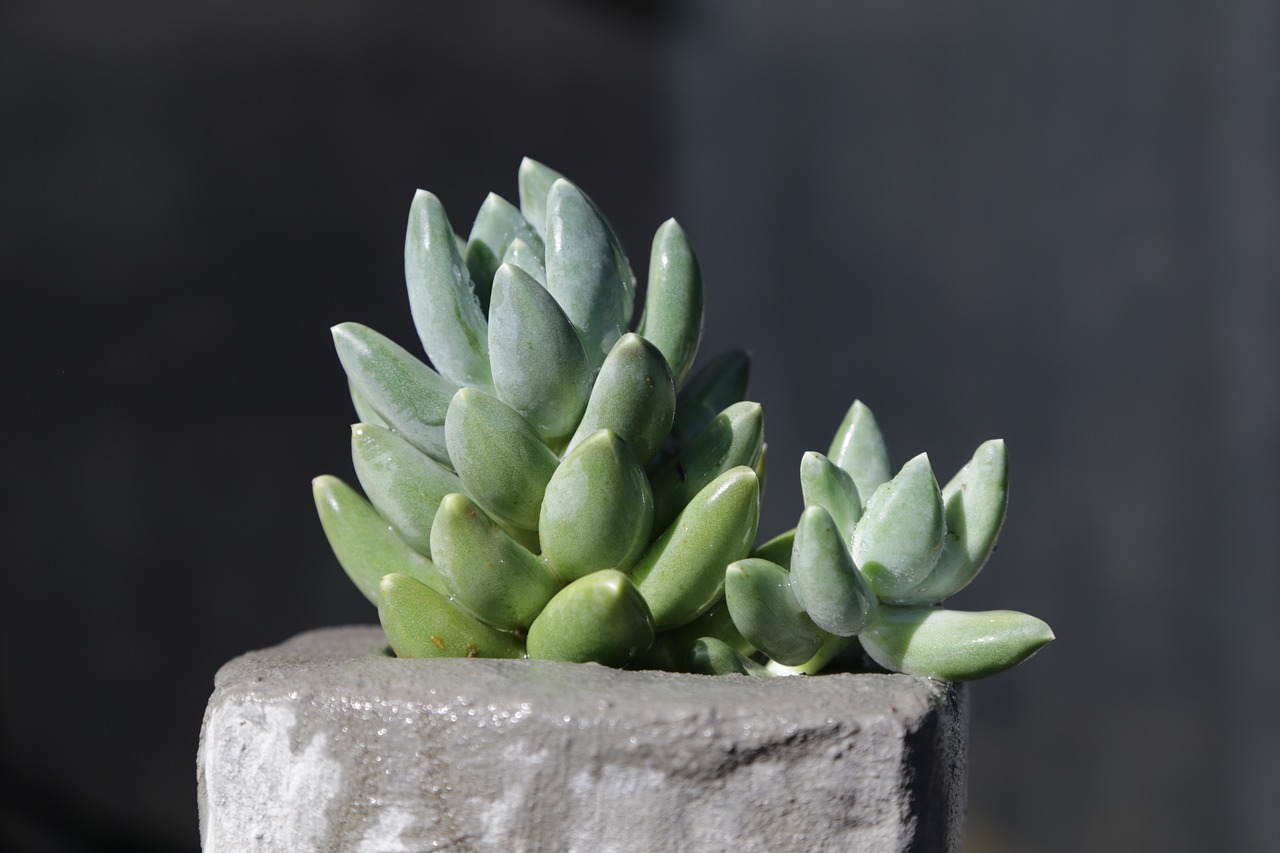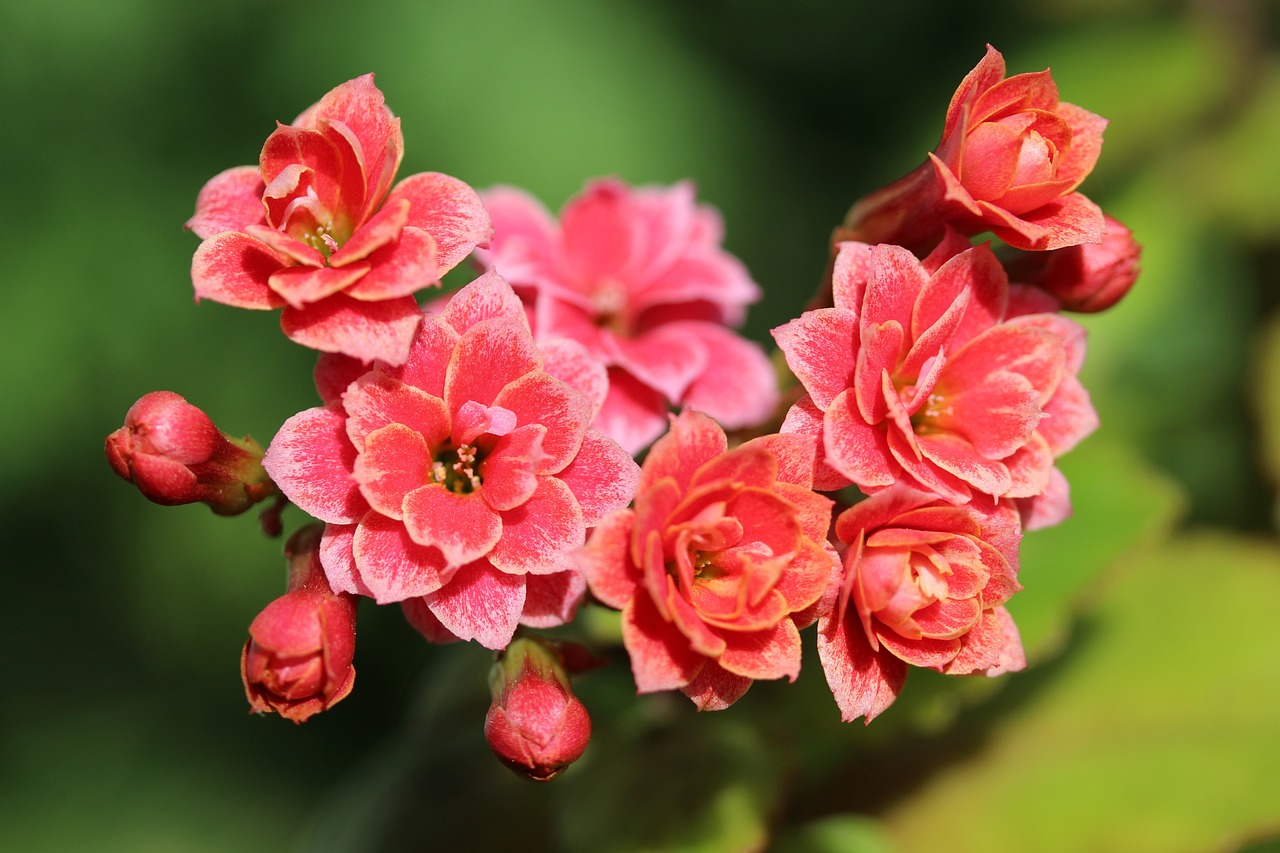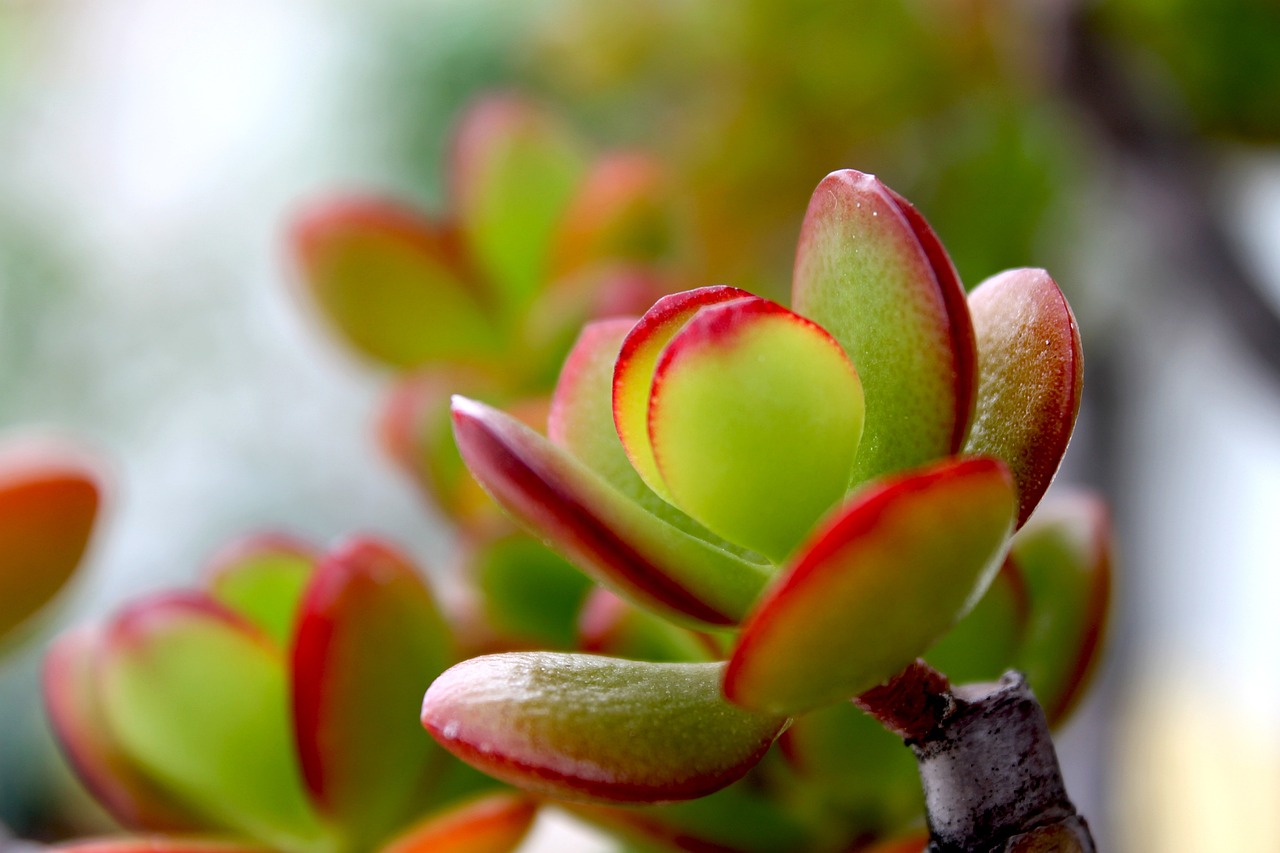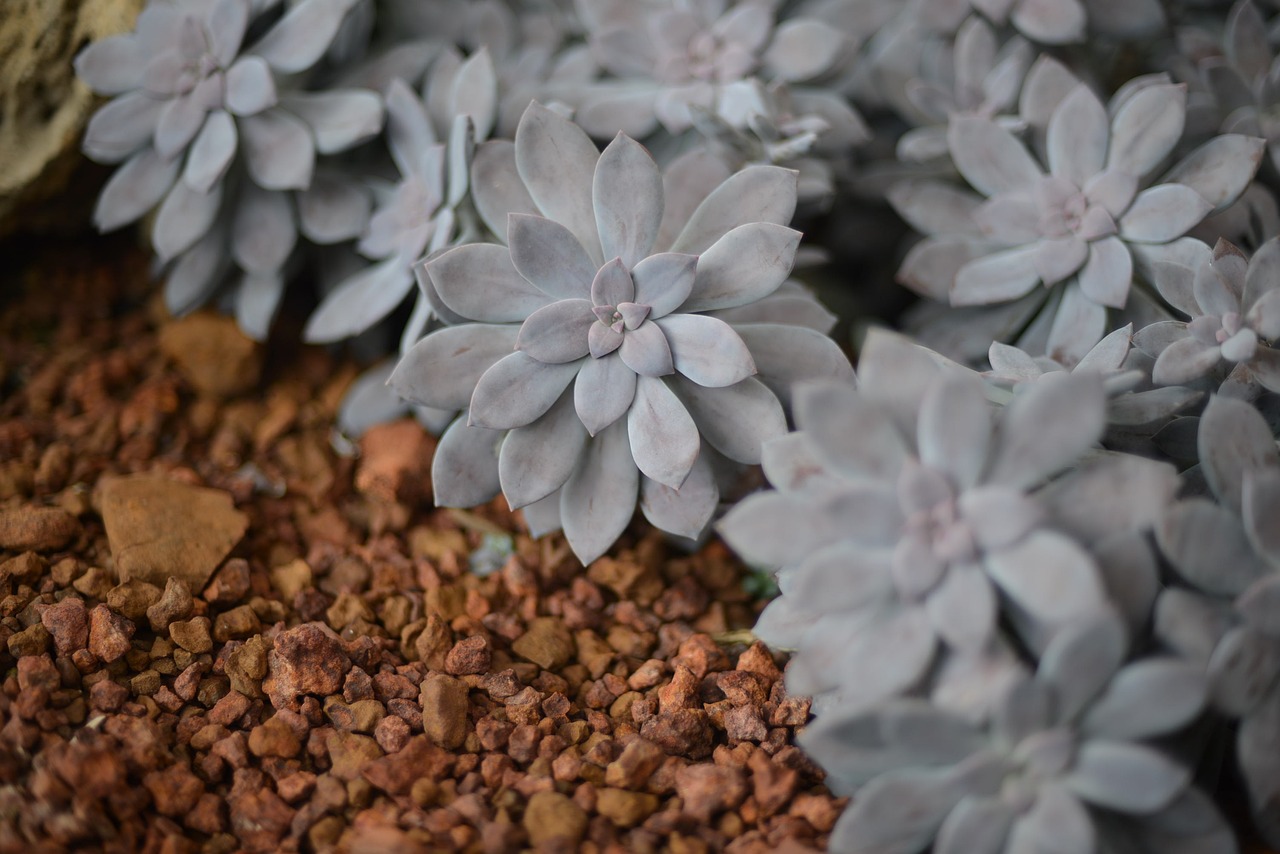Sempervivum: Features and Care
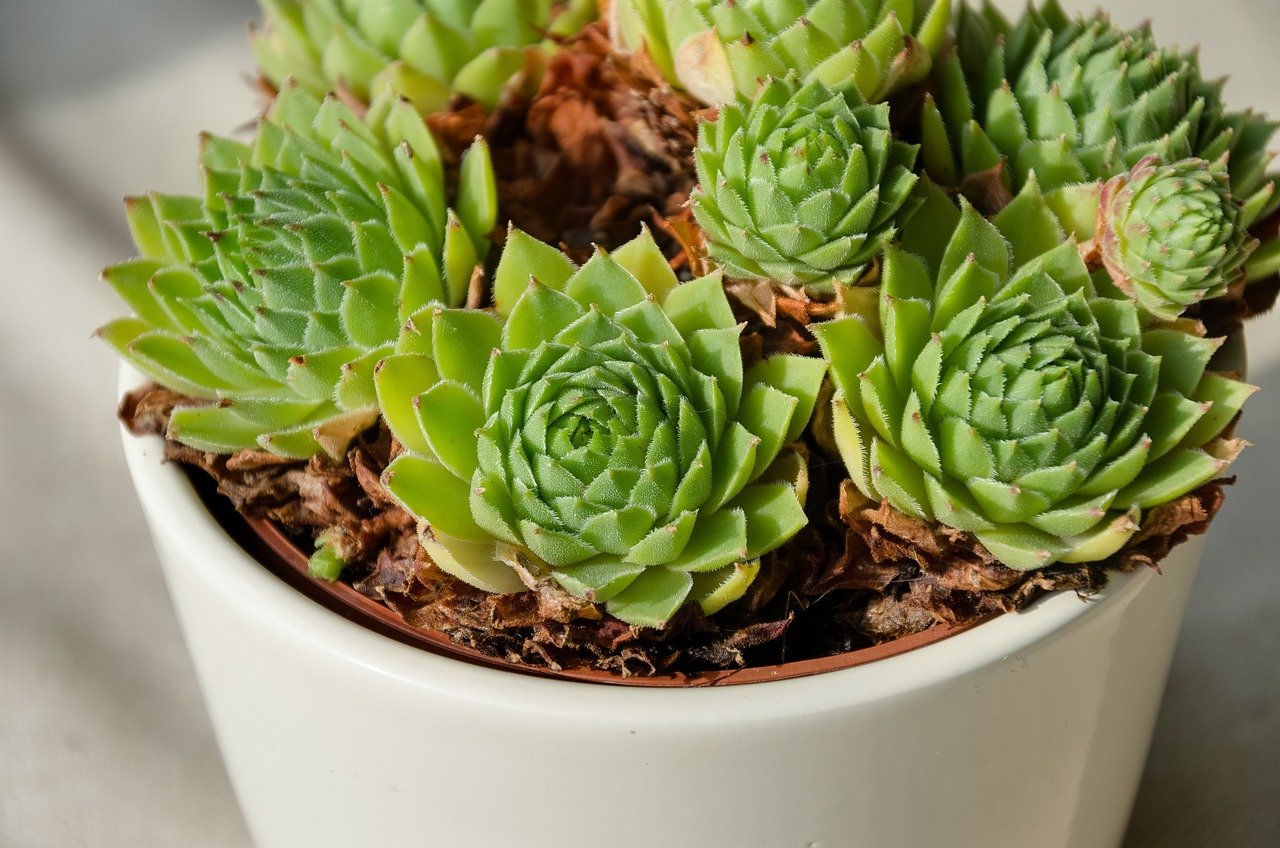
Sempervivum, known for its rosette-like shape resembling a beautiful rose, is a distinctive succulent plant. Its name, derived from Latin, means “always alive,” reflecting its resilience and adaptability. Sempervivum is a great choice for both beginner and experienced gardeners.
This article explores the basic information, cultural and historical significance, and cultivation tips for Sempervivum.
Basic Information
- Scientific Name: Sempervivum spp.
- Family: Crassulaceae
- Origin: Mountainous regions of Europe, Asia, and North Africa
- Appearance: Sempervivum forms compact rosettes, ranging from a few centimeters to around 20 cm in diameter. Its thick leaves come in various shades, including green, red, and purple. Some varieties produce small, star-shaped flowers on tall stalks in summer.
- Blooming Season: Sempervivum blooms between May and July. After flowering, the parent rosette withers, but it leaves behind offsets that continue the plant’s lifecycle.
Cultural Significance Around the World
Sempervivum has been used as a decorative plant in European gardens and rooftops for centuries. Particularly in Northern Europe, it is known as “houseleek” and was traditionally planted on thatched roofs, believed to protect homes from lightning and ensure family prosperity.
In Germany and France, Sempervivum symbolizes “eternal life” and “domestic prosperity.” It has been planted in gardens and on windowsills for generations. Today, its unique appearance makes it a popular choice for container gardening and rock gardens worldwide.
Historical Episodes
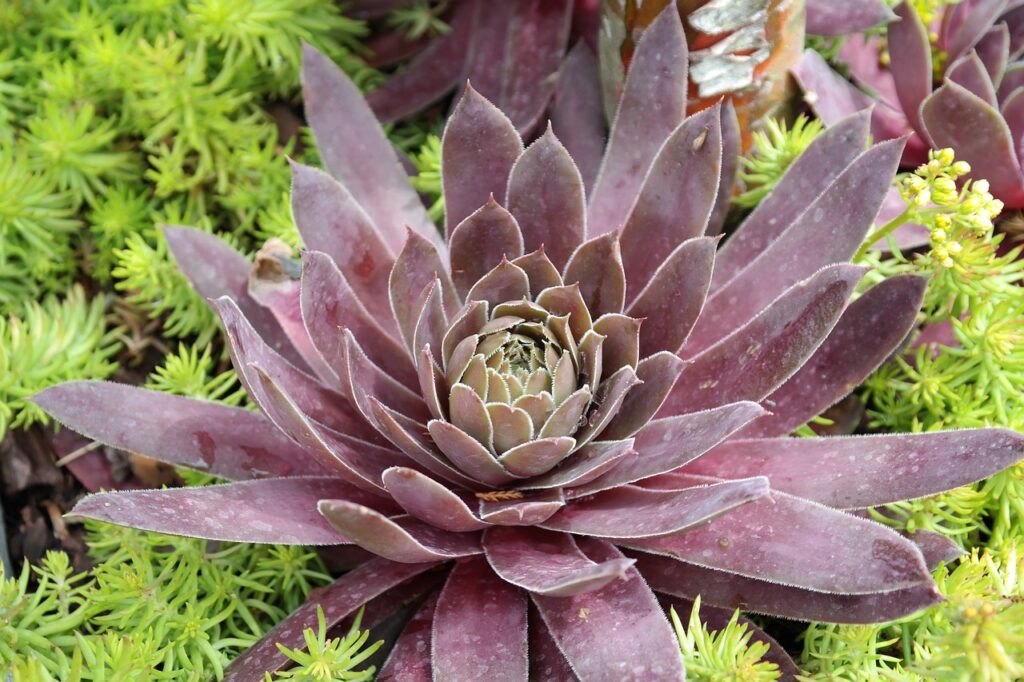
The history of Sempervivum dates back to ancient Rome, where it was believed to repel lightning strikes. Roman Emperor Charlemagne even issued a law mandating the planting of Sempervivum on rooftops to safeguard households.
During the Middle Ages, it was cultivated in monastery gardens and castle grounds. Its hardy nature made it a beloved plant among gardeners. In the 19th century, with the rise of rock garden culture, Sempervivum gained prominence in England and became a popular ornamental plant.
Gardening Advice
Sempervivum is a low-maintenance, resilient plant, but proper care can enhance its beauty. Here are some key tips:
Sunlight
Thrives in full sun but can tolerate partial shade. Strong sunlight can enhance leaf coloration in certain varieties.
Watering
Water sparingly, allowing the soil to dry out completely between waterings. In winter, reduce watering further to avoid root rot.
Soil
Prefers well-draining soil. Use succulent-specific potting mix or sandy soil for optimal growth.
Fertilizer
Generally requires no fertilizer. However, a diluted liquid fertilizer applied once or twice during the growing season can support growth.
Offset Management
After the parent rosette dies, offsets will grow. These can be separated and replanted to propagate the plant easily.
Cold Tolerance
Highly frost-resistant but requires proper drainage in snowy regions to prevent root rot.
Conclusion
Sempervivum’s stunning rosettes and durability make it a favorite among gardeners of all levels.
Whether in a rock garden or a decorative container, Sempervivum brings timeless beauty to any space.

